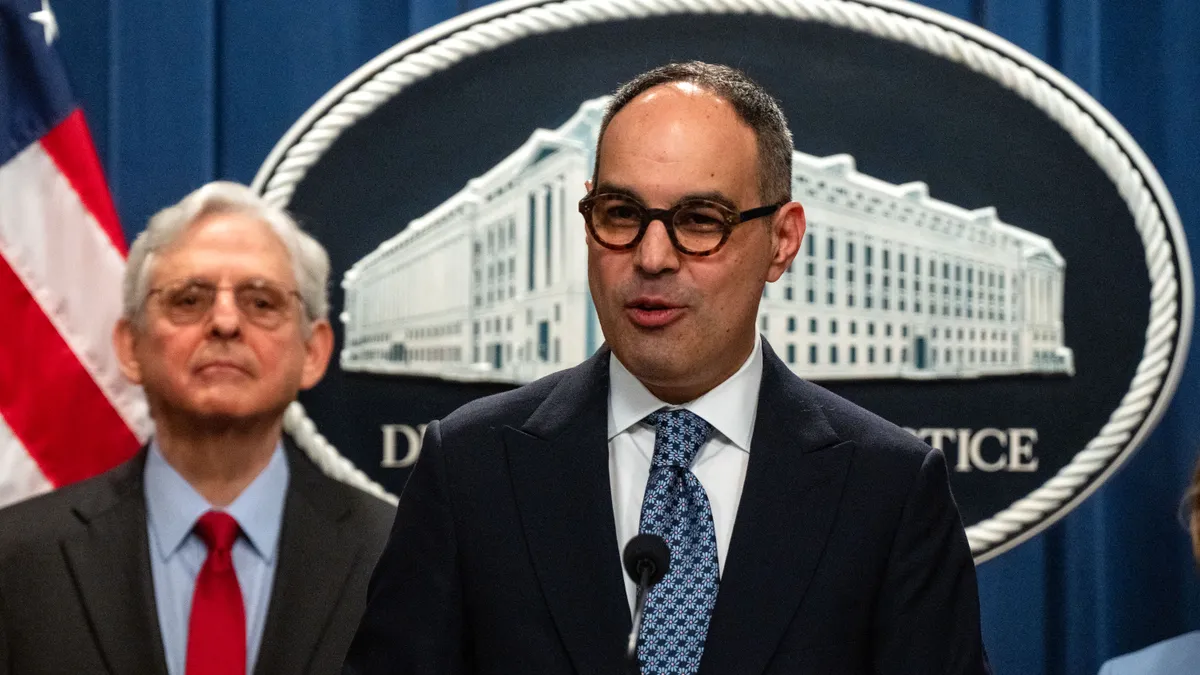Fidelity National Information Services, better known as FIS, is eyeing a pack of smaller acquisitions for its capital markets division, steering away from billion-dollar deals, the company’s CFO said this week.
Speaking at a UBS investors conference Wednesday, FIS Chief Financial Officer James Kehoe said the company isn’t likely to pursue any larger billion-dollar acquisitions anytime soon, but it’s angling to make smaller purchases in a bid to boost revenue. “We have to start generating faster growth on the top line,” he explained.
“The vision is a number of selective acquisitions,” Kehoe said. “It's highly, highly unlikely we would do a $1 billion acquisition. It's more likely we would do smaller ones.”
Still, Jacksonville, Florida-based FIS is in the process of making its own billion-dollar sale, divesting a majority of its merchant unit, Worldpay, and keeping two other divisions, one catering to banks and the other to capital markets firms. The sale of a 55% stake in Worldpay to Chicago private equity firm GTCR is expected to be completed by early next year.
The company’s acquisitions playbook is aimed at integrating more features into its core technology offering to clients. “We're trying to speed up the development cycle, and by that I mean we would buy a combination of very strategic assets that either bring a product or people capability to speed up the development,” Kehoe said.
Although he declined to describe the types of businesses FIS would be most attracted to, he pointed to FIS’s capital markets division as ripe for add-ons. “It's more likely that the majority would be in capital markets,” he said.
The FIS banking division is about two and half times bigger than the capital markets division, based on revenue, according to its most recent earnings report.
Within the capital markets division are three areas of service: trading and processing; risk and regulatory; and commercial lending, according to the equity research arm of the financial firm Robert W. Baird. The Baird Equity Research analysts “expect margins about flat in 2024” to slightly down and foresee the company investing to drive more than 7% growth in the future, they said in a Wednesday note to investors following the FIS presentation.
Kehoe also noted that FIS would avoid taking on too much debt, especially in the current inflationary environment. “The company has had too much debt over an extended period,” and it must reset with inflation, he said.
Aside from its own merger and acquisition activity, FIS is benefitting from consolidation in the banking industry as its big bank customers swallow smaller rivals.
That was the message from FIS CEO Stephanie Ferris at the conference, as she explained that FIS’s target customers are banks that have grown to holding at least $5 billion in assets, or as much as $50 billion.
“We're much more concentrated in the large major institutions, which typically end up being the share-gainers, either in terms of organic growth of deposit accounts and consumer accounts, or through M&A,” she said at the conference.
There were 4,135 federally-insured commercial banks in the U.S. as of last year, down from 6,089 in 2012 and 8,198 in 2000, according to the research firm Statista. That figure doesn’t include credit unions.
To the extent that some of the merger and acquisition activity happens among regional banks that are FIS customers, Ferris said the company hasn’t lost any business recently.











